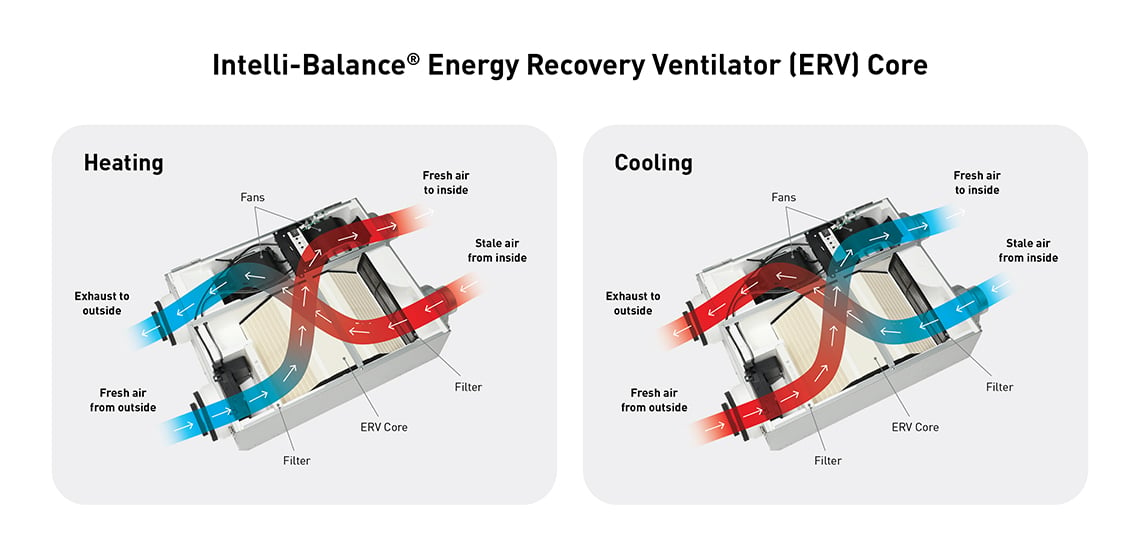We're constantly seeking innovative solutions to optimize indoor environments. While "ventilation" and "energy efficiency" are part of our daily lexicon, the Energy Recovery Ventilator (ERV) is one often-underutilized technology that blends both. This article is a primer on what ERVs do, why they're becoming essential, how they operate, and their significant impact on Indoor Air Quality (IAQ).
The smart solution for fresh air
At its core, an ERV is a mechanical ventilation device that introduces fresh outdoor air while exhausting stale indoor air. The crucial differentiator is that it recovers energy from the outgoing air to precondition the incoming air. Think of it as a smart heat and humidity exchanger that actively manages the energy within the air, unlike a simple exhaust fan.

The triple-threat benefit: Health, comfort and savings
The "why" behind ERVs is compelling, addressing both occupant well-being and operational efficiency.
- Combating Stale Air: Tightly sealed buildings can trap indoor pollutants, allergens, and odors. ERVs provide continuous fresh air changes to dilute these contaminants and create a healthier breathing environment.
- Enhanced Comfort & Lower Costs: By preconditioning incoming air, ERVs reduce the load on your HVAC system. In warmer months, they cool and dehumidify incoming air. In colder months, they warm and moisten it. This process leads to more consistent comfort, tangible energy savings, and a reduced carbon footprint.
The science inside: How the ERV core saves energy
The heart of an ERV is its "energy recovery core," a sophisticated air exchanger. Stale indoor air passes through one set of channels while fresh outdoor air passes through a separate set. The core's design allows for the transfer of both sensible heat (temperature) and latent heat (humidity) between the two airstreams without mixing them.
This is like a microscopic sponge that absorbs heat and moisture from the warmer, more humid air and releases it into the cooler, drier air.
The result is that in summer, hot, humid outdoor air is cooled and dehumidified. In winter, cold, dry outdoor air is warmed and its moisture content is balanced.

The payoff: cleaner indoor air quality
The ultimate value of an ERV is its impact on indoor air quality (IAQ). By consistently supplying fresh, preconditioned air, ERVs achieve the following:
- Reduce pollutants and allergens: They dilute VOCs, CO2, odors, and other airborne contaminants, while also flushing out pollen and irritants.
- Improve health and productivity: Better IAQ has been linked to improved cognitive function, reduced sick building syndrome symptoms, and overall enhanced well-being for occupants.
- Provide a clear competitive advantage: Offering superior IAQ is a significant selling point for builders and a key comfort feature for homeowners in both single-family and multi-family dwellings.
What now?
ERVs are powerful tools for building healthier, more energy-efficient buildings. This primer provides a foundational understanding of their role.
If you’re interested in diving deeper into ERV technology, specific applications or the sizing and selection process, our ERV video series is available at iaq.na.panasonic.com/what-is-an-erv.
Let's continue to build smarter, healthier indoor environments together.



-1.png?width=352&name=IB150%20SRE-TRE%20bar%20graph%20(1)-1.png)